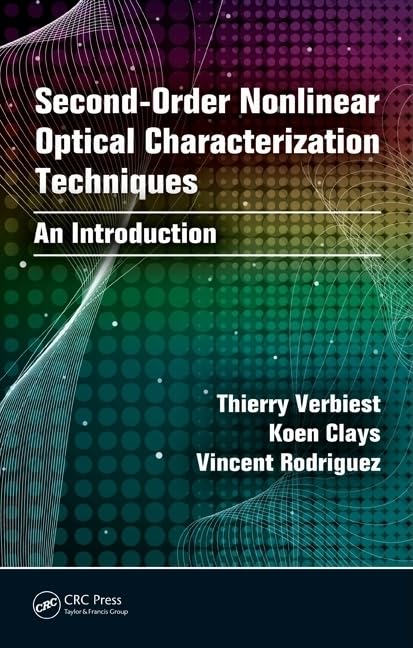Second-order Nonlinear Optical Characterization Techniques: An Introduction
Second-order Nonlinear Optical Characterization Techniques: An Introduction is backordered and will ship as soon as it is back in stock.
Couldn't load pickup availability
Genuine Products Guarantee
Genuine Products Guarantee
We guarantee 100% genuine products, and if proven otherwise, we will compensate you with 10 times the product's cost.
Delivery and Shipping
Delivery and Shipping
Products are generally ready for dispatch within 1 day and typically reach you in 3 to 5 days.
Book Details
-
Author: Thierry Verbiest
-
Publisher: CRC Press
-
Edition: 1st Edition
-
Binding: Hardcover
-
Number of Pages: 192
-
Release Date: 20th February 2009
-
ISBN: 9781420070712
-
Languages: English
-
Package Dimensions: 9.3 x 6.2 x 0.7 inches
About the Book
Second-Order Nonlinear Optical Characterization Techniques: An Introduction is a comprehensive guide designed to introduce nonspecialists to the world of second-order nonlinear optics and its applications as a characterization tool. This book is ideal for chemists, biochemists, biologists, and material scientists who are eager to explore nonlinear optical techniques but may not have an advanced background in mathematics or physics.
The text begins with a clear introduction to linear optics, focusing on polarizability and linear susceptibility. It then moves on to second-harmonic generation and covers the study of surfaces and interfaces by exploiting the unique surface sensitivity of second-harmonic generation and sum-frequency generation. The final chapter presents second-order imaging techniques, such as confocal microscopy and two-photon excited fluorescence microscopy.
Accessible and concise, this book provides scientists from various disciplines with the knowledge needed to understand and utilize second-order nonlinear optical methods for probing surfaces and interfaces. With its practical approach, this book serves as an essential resource for anyone looking to expand their toolkit with these powerful characterization techniques.





